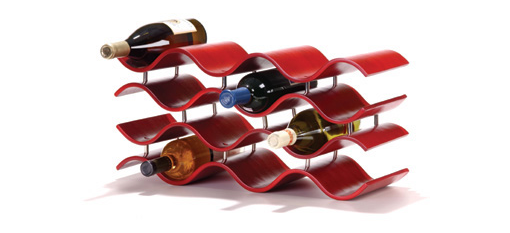The world of wine is a complex and daunting place for the uninitiated. The combination of tastes and smells, as well as varietals, vineyards and vintages, can be intimidating for anyone who does not know. The truth is that the world of wine doesn’t have to be a complex place, and it can be very rewarding with the understanding of a few basics.
This handy guide lists some varietals that will help you build an impressive wine rack and will certainly give you a sound understanding of the nuances of different types of wine.
Cabernet Sauvignon
Description: This is one of the big red wines. Cabernet Sauvignon is known for its depth of flavor and aroma; it is rich, full-bodied and intense, with cherry-currant and sometimes herbal flavors. When you let the wine linger on your palate for a moment, you’ll notice hints of blueberries, black currant, cassis, raspberries, and oak. Cabernet Sauvignon also has noticeable tannins — tannic acid is what gives red wine that dry sensation in the mouth and in the back of the throat.
Pair with: A big wine needs a big taste to match. Cabernet Sauvignon is best paired with game or other light, rich meats, such as duck, spicy beef, pâté, rabbit, roasts, spicy poultry, sausage, and kidney. It also goes well with strong cheeses.
Merlot
Description: Merlot is perhaps the most accessible red wine to the new connoisseur, as it is medium- to full-bodied with herbal flavors. Usually softer in taste than a Cabernet Sauvignon, Merlot has notes of blackberry, plum, currant, chocolate, and vanilla.
Pair with: Merlot is quite versatile. You can pair it with any medium-flavor food, but it’s at its best with beef and lamb, and can also be used with game and duck. Merlot also works well with rich Italian foods.
[listwine id=58088]
Pinotage
Description: Pinotage is a red wine grape that is South Africa’s signature variety. It was bred there in 1925 as a cross between Pinot noir and Cinsaut (Cinsaut was known as “Hermitage” in South Africa during that time, hence the portmanteau name of Pinotage). It typically produces deep red varietal wines with smoky, bramble and earthy flavors, sometimes with notes of bananas and tropical fruit, but has been criticized for sometimes smelling of acetone.
Pair with: Pinotage pairs well with game dishes such as Springbok or Kudu. The earthly flavours will also work well with mushrooms and truffles.
Chardonnay
Description: If you’re having people to dinner and want to serve white wine, you can’t go wrong with Chardonnay. This is one of the most popular white wines out there because it’s usually very well-balanced. Individual Chardonnays can range from clean and crisp with a hint of varietal flavor to rich and complex. With a Chardonnay, you can expect a medium- to full-bodied wine with apple and pear flavors, in addition to vanilla and butter.
Pair with: Think grilled chicken, salmon, shellfish, halibut, and avocado. It’s also an excellent match with French foods and pastas with cream sauces.
[listwine id=81479]
Sauvignon Blanc
Description: Sauvignon Blanc is the lightest of whites, and it is known for its grassy, herbal, citrus flavors. Crisp and acidic, it is usually a dry wine and is always very accessible.
Pair with: This white wine pairs very well with light foods and white meats, especially fish and seafood. It also makes an excellent aperitif.
Blush wines – rosés
Description: Blush wines, as the name suggests, have a pink hue. Their color is derived from a blend of red grapes, using a special technique that transfers some of the pigment from the grapes’ skin into the wine to produce a pink color. These wines came to prominence in the 1980s when white wines were booming and wine producers searched earnestly for ways to use up their surpluses of red grapes. The result was blush wines, which are also sometimes made from a straight mix of red and white wines — don’t try this at home.
Typically, blush wines vary in color from pale pink to apricot to salmon. They are lighter wines and are generally slightly sweet, although some can be quite dry with a hint of residual sugar.
Pair with: Blush wines are light and slightly sweet, which makes them an excellent pairing for spicy foods — Latin and Asian dishes — as the clean, sweet flavor can offset the fiery burn. It is not recommended to chase a bowl of chili with a glass of rosé, but snacks such as nachos or quesadillas are a great match.
[listwine id=64339]
Prices only valid until 12 January 2013.




